
Two 16-inch MacBook Pros in a Shootout
November 20th, 2019 by rob-ART morgan, mad scientist
Updated storage graphs on November 21st
The 'entry' 8-core 16-inch MacBook Pro 2.3GHz comes with 16GB of memory and a Pro 5500M GPU with 4G of GDDR6 memory. How does that compare to the optional version with 8-core 2.4GHz CPU, 32GB of memory, and Pro 5500M GPU with 8GB of GDDR6 memory?
GRAPH LEGEND
2.3GHz 5500M 4G = 2019 16-inch MacBook Pro with 8-core 2.3GHz 9880H CPU, 16GB of 2666MHz DDR4 memory, Radeon Pro 5500M GPU with 4G of GDDR6 memory, 1TB of flash based storage.
2.4GHz 5500M 8G = 2019 16-inch MacBook Pro with 8-core 2.4GHz 9980HK CPU, 32GB of 2666MHz DDR4 memory, Radeon Pro 5500M GPU with 8G of GDDR6 memory, 2 TB of flash based storage.
NOTE: Both laptops were running macOS 10.15.1 Catalina.
Blender 2.79 GPU only
Render BMW GPU demo file rendered with GPU only using OpenCL. (LOWER time in Seconds = FASTER)
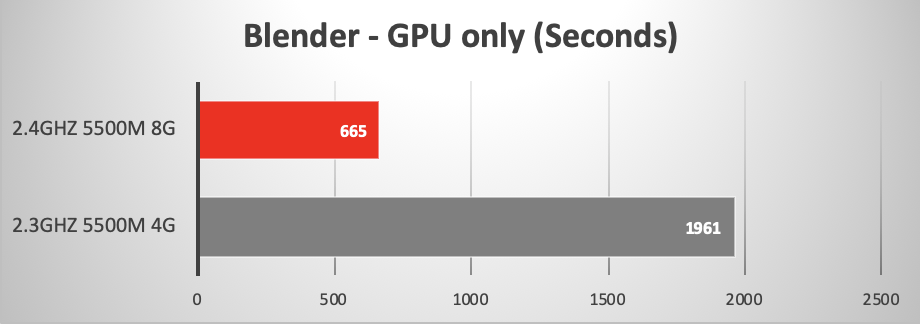
Blender 2.80 CPU only
Render BMW CPU demo file rendered with CPU only using OpenCL. (LOWER time in Seconds = FASTER)
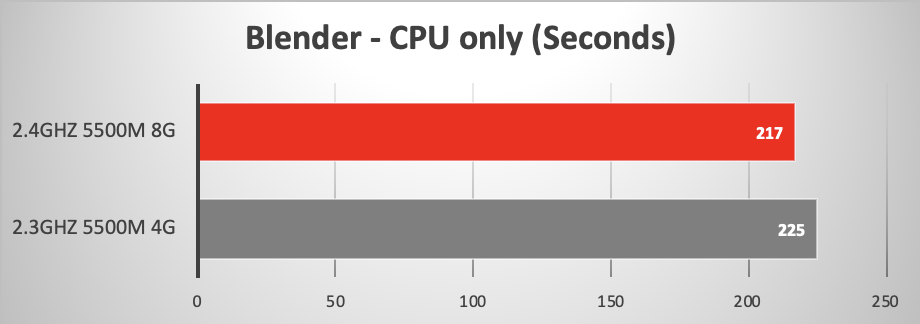
DaVinci Resolve 16.1
Looping playback of Candle 1080p project while rendering 1 node of Noise Reduction. (HIGHER Frames per Second = FASTER)
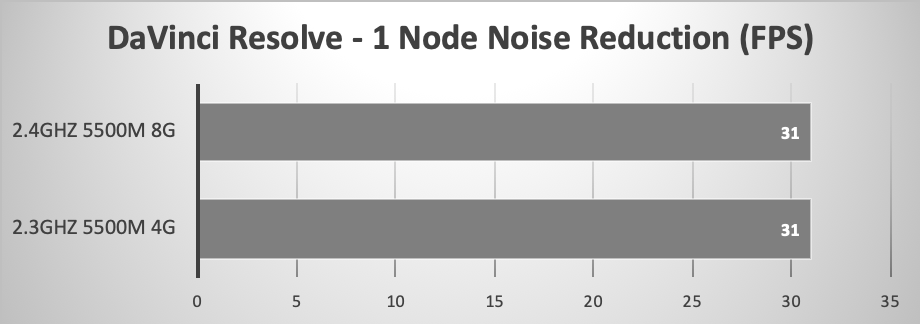
Final Cut Pro X 10.4.7
Exported the BruceX sample 5K project to ProRes 4444 XQ. (LOWER Time in Seconds = FASTER)
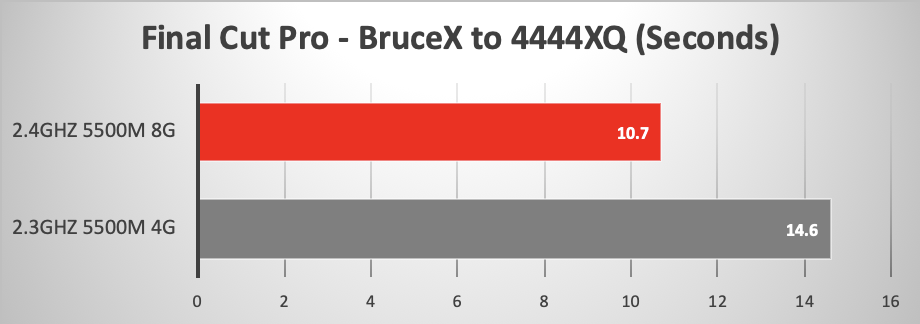
Compressor 4.4.5
The BruceX 5K project was sent to Compressor to trans-code into HEVC 10-bit. (LOWER Time in Seconds = FASTER)
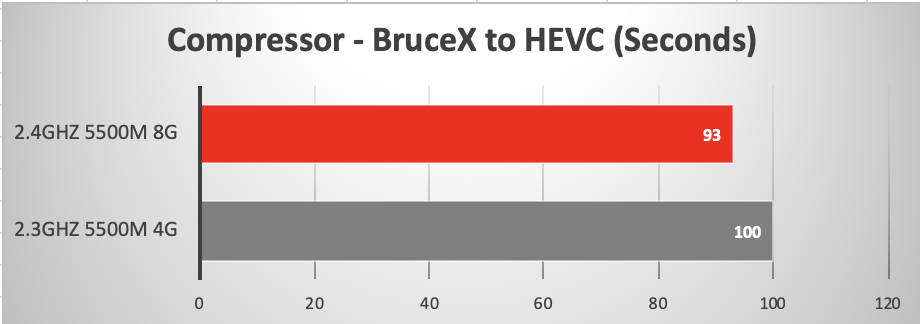
AJA System Test 12.4.3
For measuring the large sequential transfer speed of the internal PCIe-based flash storage, settings were 3840x2160 Resolution, 16GB Test File Size, and 16bit RGB Codec. (HIGHER Megabytes per Second = FASTER)


WHAT DID WE LEARN?
Most importantly, neither model experienced thermal down-throttling like we reported on the previous model. No matter what app we threw at them, they never dropped below the base frequency -- unless the processors were idle. When stressed, the temperatures rose and the fans kicked up, but the improved "fans and fins" did their job.
Apps like DaVinci Resolve, Blender, Final Cut Pro (sending to Compressor), Shadow of the Tomb Raider and Warhammer II maxed out the Pro 5500M with 4G of video memory even when only one of those apps was running. And the 16GB main memory not used by macOS in the 2.3GHz MacBook Pro was gobbled up by apps like Motion, DaVinci Resolve, and After Effects. So if you are into serious pro apps and high end gaming, you should consider the 32G main memory upgrade along with the Pro 5500M GPU with 8G of video memory.
UPDATED: We figured out why the 1TB PCIe-based flash storage reported up to 6% faster transfer speeds than the 2TB. We were using two different versions of AJA System Test. Retesting with the latest version on both MacBook Pros closed the gap to 1% for READ and 2% for WRITE.
This is our first report on the 16-inch MacBook Pro. More test results are coming including comparisons to earlier models of MacBook Pro and Mac Desktops. We will also post some test results using fast GPUs in eGPU boxes.
Comments? Suggestions? Feel free to email me,
Follow me on Twitter @barefeats.
WHERE TO BUY APPLE products:
USA readers can help BareFeats earn a commission by clicking THIS TEXT LINK or on any of our Apple display ads when considering a purchase.
Readers in Australia can support us by clicking our link to the Apple Store AU.
OTHER GOOD SOURCES
Trans International sells various Mac upgrades
Other World Computing sells memory, eGPUs, storage, and used Macs.
B&H Photo Video sells Apple products, GPUs, eGPUs, displays, storage, etc.
Has Bare Feats helped you? How about helping Bare Feats?
copyright 2019 Rob Art Morgan
"BARE facts on Macintosh speed FEATS"
FEEDBACK or QUESTIONS?